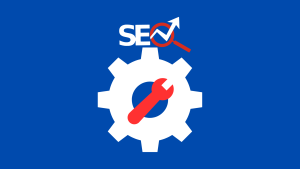Key Performance Indicators (KPIs) are measurable values that demonstrate how effectively an organization is achieving key business objectives. They are essential for gauging the success of various strategies and initiatives, providing quantifiable insights that guide decision-making and strategy adjustments.
Understanding Cluster Topics
Cluster topics refer to a content marketing strategy where a core topic, or “pillar,” is supported by multiple related subtopics or “clusters.” This approach enhances SEO efforts by creating a comprehensive network of interconnected content, making it easier for search engines to understand and rank your site.
Importance of Tracking KPIs for Cluster Topics
Tracking KPIs for cluster topics is vital for assessing the effectiveness of your content strategy. By measuring specific indicators such as organic traffic, engagement rates, and conversion rates, you can determine how well your content clusters are performing, identify areas for improvement, and ensure that your efforts align with your overall business goals.
How Do KPIs Impact E-commerce Performance?
KPIs significantly impact e-commerce performance by providing crucial insights into various aspects of the business. By tracking metrics like conversion rates, customer lifetime value, and cart abandonment rates, e-commerce businesses can identify strengths and weaknesses in their operations. Understanding these KPIs enables companies to optimize their website, improve customer experience, and enhance inventory management, ultimately driving sales and growth.
- Conversion Rate: Measures the percentage of visitors who make a purchase.
- Customer Lifetime Value (CLV): Indicates the total revenue a business can expect from a single customer over their lifetime.
- Cart Abandonment Rate: Tracks the percentage of shoppers who add items to their cart but do not complete the purchase.
- Bounce Rate: Shows the percentage of visitors who leave the site after viewing only one page.
- Average Order Value (AOV): Calculates the average amount spent each time a customer places an order.
- Inventory Turnover Rate: Measures how often inventory is sold and replaced over a specific period.
- Order Fulfillment Time: Tracks the time taken to process and deliver an order.
- Repeat Purchase Rate: Indicates the percentage of customers who return to make another purchase.
1. Setting Up the Right KPIs
Identifying Key Metrics
The first step in tracking KPIs for cluster topics is identifying the key metrics that matter most to your business. These metrics may include organic search traffic, bounce rate, average session duration, conversion rate, and social media engagement. Each of these KPIs provides valuable insights into how your content is performing and resonating with your audience.
Aligning KPIs with Business Goals
To ensure that your KPIs are meaningful, they must align with your overarching business goals. For example, if your primary objective is to increase sales, focus on KPIs such as conversion rates and lead generation. If brand awareness is your goal, prioritize metrics like social shares and impressions. Aligning KPIs with business goals helps you track the right indicators and measure the true impact of your cluster content strategy.
Tools for Tracking KPIs
Numerous tools are available to help you track and analyze your KPIs effectively. Google Analytics is a popular choice for monitoring website traffic and user behavior. Other tools like SEMrush, Ahrefs, and Moz provide insights into keyword performance and backlinks. Social media platforms also offer analytics tools to measure engagement and reach. Leveraging these tools enables you to gather accurate data and make informed decisions.
2. Data Collection and Analysis
Methods for Data Collection
Accurate data collection is crucial for tracking KPIs effectively. Utilize web analytics tools such as Google Analytics to gather data on website performance. Social media analytics tools can help track engagement and reach on various platforms. Additionally, CRM systems can provide insights into customer interactions and sales metrics. Consistently collecting data ensures you have a robust dataset for analysis.
Analyzing KPI Data
Once you have collected the data, the next step is analysis. Look for trends and patterns in your KPI data to understand how your content clusters are performing. For instance, examine the organic search traffic to your cluster pages, the engagement rates on related social media posts, and the conversion rates of visitors who landed on your site through cluster content. This analysis will help you identify what is working and what needs improvement.
Interpreting Results
Interpreting KPI results involves making sense of the data to derive actionable insights. Determine which cluster topics are driving the most traffic, engaging the audience, and converting visitors into leads or customers. Compare the performance of different clusters to identify high-performing content and areas that need optimization. Use these insights to refine your content strategy and enhance overall performance.
3. Adjusting Strategies Based on KPI Insights
Recognizing Patterns
Analyzing KPIs helps you recognize patterns and trends in your content performance. For instance, you might notice that certain topics consistently generate higher engagement or that specific types of content lead to more conversions. Identifying these patterns allows you to understand what resonates with your audience and what drives success.
Adapting Content Strategies
Based on the insights gained from your KPI analysis, it’s essential to adapt your content strategies accordingly. If you find that certain clusters are performing exceptionally well, consider creating more content around those topics. Conversely, if some clusters are underperforming, investigate the reasons behind this and make necessary adjustments, such as updating the content, optimizing keywords, or improving the user experience.
Continuous Improvement
Tracking KPIs and adjusting strategies is an ongoing process. Continuously monitor your KPIs to ensure your content remains relevant and effective. Regularly updating your content, experimenting with new formats, and staying attuned to audience feedback can lead to continuous improvement. This iterative approach ensures that your cluster content strategy evolves and adapts to changing trends and audience preferences.
4. Reporting and Sharing KPI Results
Creating Effective Reports
Creating clear and comprehensive reports is essential for communicating your KPI findings. Use visual aids like charts, graphs, and tables to present your data in an easily digestible format. Highlight key metrics, trends, and insights to provide a concise overview of your content performance. Effective reporting helps stakeholders understand the impact of your cluster topics and make informed decisions.
Sharing Insights with Stakeholders
Regularly share your KPI insights with stakeholders, including team members, managers, and clients. Presenting your findings helps ensure everyone is on the same page and fosters collaboration. Highlight successful strategies and areas needing improvement, and discuss how these insights can inform future content planning and decision-making.
Using Feedback for Future Planning
Feedback from stakeholders is invaluable for refining your content strategy. Encourage discussions around your KPI reports to gather different perspectives and ideas. Use this feedback to adjust your approach, set new goals, and enhance your overall strategy. Incorporating stakeholder input ensures your content efforts align with broader business objectives and continuously improve.
5. Enhancing the Reporting Process
Customizing Reports for Different Audiences
Tailor your reports to suit the needs of different stakeholders. Executives might prefer high-level summaries with key insights and actionable recommendations, while content creators might need detailed analytics on specific content pieces. Customizing reports ensures that each audience receives the information most relevant to them.
Using Automation Tools
Leverage automation tools to streamline the reporting process. Platforms like Google Data Studio or Tableau can automatically pull data from various sources, update reports in real-time, and generate visualizations. Automation saves time, reduces the risk of human error, and ensures your reports are always up-to-date.
Regular Review Meetings
Schedule regular review meetings to discuss KPI reports and insights with your team. These meetings provide an opportunity to delve deeper into the data, brainstorm ideas, and align on next steps. Regular reviews keep everyone engaged and focused on achieving your content goals.
Conclusion
Tracking KPIs to measure the effectiveness of your cluster topics is a dynamic and ongoing process. By setting up the right KPIs, collecting and analyzing data, adjusting strategies based on insights, and effectively reporting your findings, you can continuously improve your content performance and achieve your business objectives. Remember, the key to success lies in staying adaptable and responsive to the ever-changing digital landscape.





